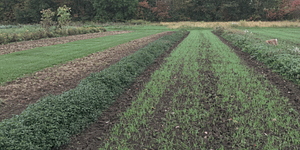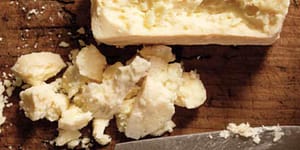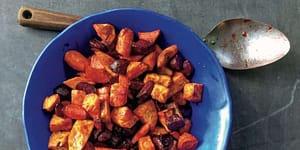Making Yogurt or Kefir Cheese: A Simple How-To

Making your own yogurt is an easy, healthy, and affordable way to experiment with fermentation, make milk last longer, and replace an industrial food product filled with mysterious chemical ingredients with one you know all about.
Yogurt itself is a wonderful, versatile food, but you can also turn it into a spread or dip by thickening it with this simple method.
The following is an excerpt from Fresh Food from Small Spaces: The Square-Inch Gardener’s Guide to Year-Round Growing, Fermenting, and Sprouting by R. J. Ruppenthal.
You can make a spreadable cheese (resembling cream cheese or sour cream) from either yogurt or kefir. You will notice that when you make either yogurt or kefir, it becomes more solid and sour the longer you let it ferment. Make sure to start the cheese with some mature yogurt or kefir, not the particularly runny stuff; give it a few extra hours of fermentation time for good measure.
- A few ounces of strong yogurt or kefir
- Large glass jar, measuring beaker, bowl, or clay pot
- One square of cheesecloth or large coffee filter
- Strainer that fits over this container or an extra-large piece of cheesecloth
- Large rubber band or twine
Wrap your homemade yogurt in cheesecloth or a coffee filter. Using the strainer or extra cheesecloth (with rubber band or twine if needed), suspend this package above the container. Make sure it has room to drip. Put this in the refrigerator, an unused oven, or anywhere else it will fit and be relatively undisturbed. Leave and allow it to drain for 24 to 48 hours. Your main goal here is to strain out the water (whey) from the yogurt or kefir, leaving a solid mass that can be used like cheese. This recipe makes a nutritious, low-fat cheese. Be aware that your yogurt or kefir will continue to ferment during this time, so if you want a milder version, then you might want to put the cheese into the refrigerator as it drains. (This will slow down the fermentation.) Use the finished product as you would use cream cheese or sour cream. And don’t forget the whey: this liquid byproduct makes a refreshing drink on its own, or, if coming from kefir, it could be used to culture a batch of kimchi or sourdough starter.
Related Posts:
Recent Articles
Want to make the most of the slow gardening season? Lay cover crops to improve the health of your soil and plants! The following is an excerpt from The Celestial Garden by Jane Hawley Stevens. It has been adapted for the web. Benefits of Cover Crops Cover cropping is a management practice that benefits the…
Read MoreIf you read our post about growing koji in your kitchen, you’re probably itching to try out those new koji skills! This miso cheese recipe is an excellent next stop on your koji-kitchen journey. Miso cheese is sure to add a twist to any cheese lover’s plate, plus it’s easy to make at home! The following…
Read MoreInterested in micro-farming, but don’t know where to begin? Believe it or not, you only need 9 tools to get started. These easy-to-find tools for micro-farming will set the stage for productive growing! The following is an excerpt from The Lean Micro Farm by Ben Hartman. It has been adapted for the web. Unless otherwise noted, all…
Read MoreDo you still have an abundance of root veggies from your final fall harvest? You’re in luck! This pomegranate drizzle will add just the right amount of “oomph” to your favorite dish of roasted root veggies. The following recipe is from The Fruit Forager’s Companion by Sara Bir. It has been adapted for the web. RECIPE:…
Read MoreGrains are a ubiquitous part of the American diet and a staple in many of our favorite recipes. Bread? Yep, grains. Pasta? Grains there, too. Pancakes? Most definitely! With such a strong presence in our daily eating habits, shouldn’t we know more about what grains actually are and why they make our favorite foods taste…
Read More






